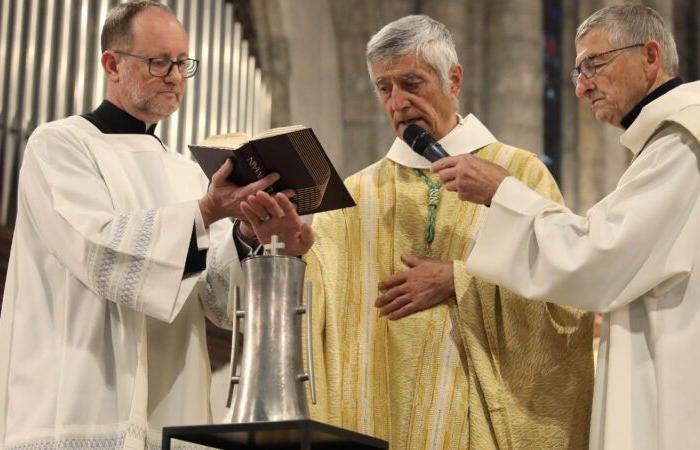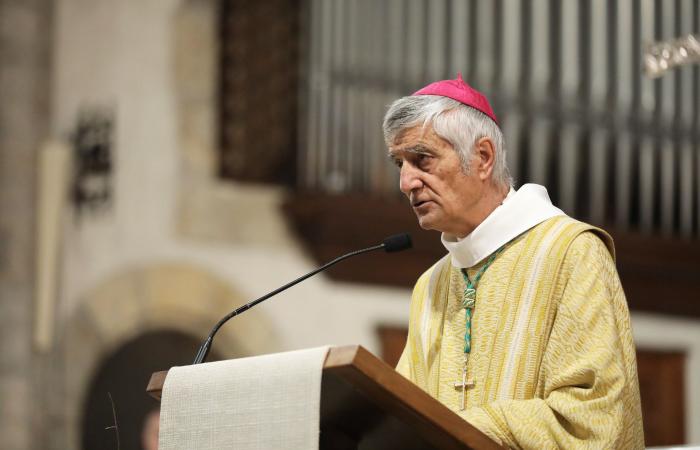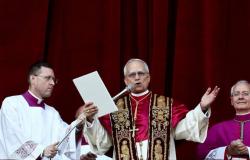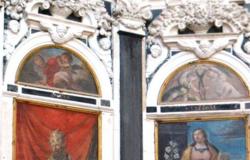“We are doing with it, but we want to celebrate this mass that opens the time Pascal,” said Mgr Lovey, opening the chrisal mass to the cathedral of Sion on April 17, 2025. He alluded to the snow that has been abundant since the day before, which disturbed traffic and activities to the plain.
The priests and the faithful converge in small steps towards the cathedral like tightrope walkers moving on a wire. The place that separates the bishopric from the cathedral of Sion has not yet been denied. After the summer heat at the beginning of the month, heavy spring snow fell in abundance to the plain in Valais. Large tree branches break with a crash under the weight of the snow.
The procession of priests, deacons and wearers of oil which usually crosses the place, from the bishopric to the cathedral, took place in the church.

“It’s a bit special Today. We do with it, but we want to celebrate this mass which opens the time Pascal, ”launched Mgr Jean-Marie Lovey, welcoming the priests and deacons of the diocese who were able to go to the cathedral. An assembly less numerous than customs attended the chrismal mass, where the bishop proceeded to the ritual of the blessing of oils: the holy chrême, the oil of the catechumens and the oil of the patients.
In the choir, around thirty priests and deacons have renewed their wishes for obedience to the bishop. About twenty young people in the Sion Schola animated the celebration, offering a great performance for the joy of their director, Marc Bochud.
“Mass chrism is located in the articulation of major events in Christian life. It is celebrated at the entrance to the Pascal Tridum, “said Mgr Lovey in his homily, adding: the total donation of the Eucharist on Thursday, the Passion Friday, the tomb of Saturday. “This celebration is therefore already full of the climate of passion with its share of unbearable suffering and this smell of corpse to the tomb.”
A subtle odor of perfume
But the procession of oils during this mass “gives it a subtle smell of perfume; Mass chher smells good ”. The oil comes to put sweetness on our injuries. And, continued the bishop, “who does not carry in the story of the wounds even, deep wounds?” Are we going to present our soft remedy to the benefits of our soft stories, those of our parishes, our families, our communities, that of our Church? “The whole world goes to tear, has played Mgr Lovey, we do not stop hearing the story of the sufferings inflicted by so many trials.” He hoped that the oil presented to the Lord serves as an instrument to relieve any physical, moral and spiritual evil in each of us.
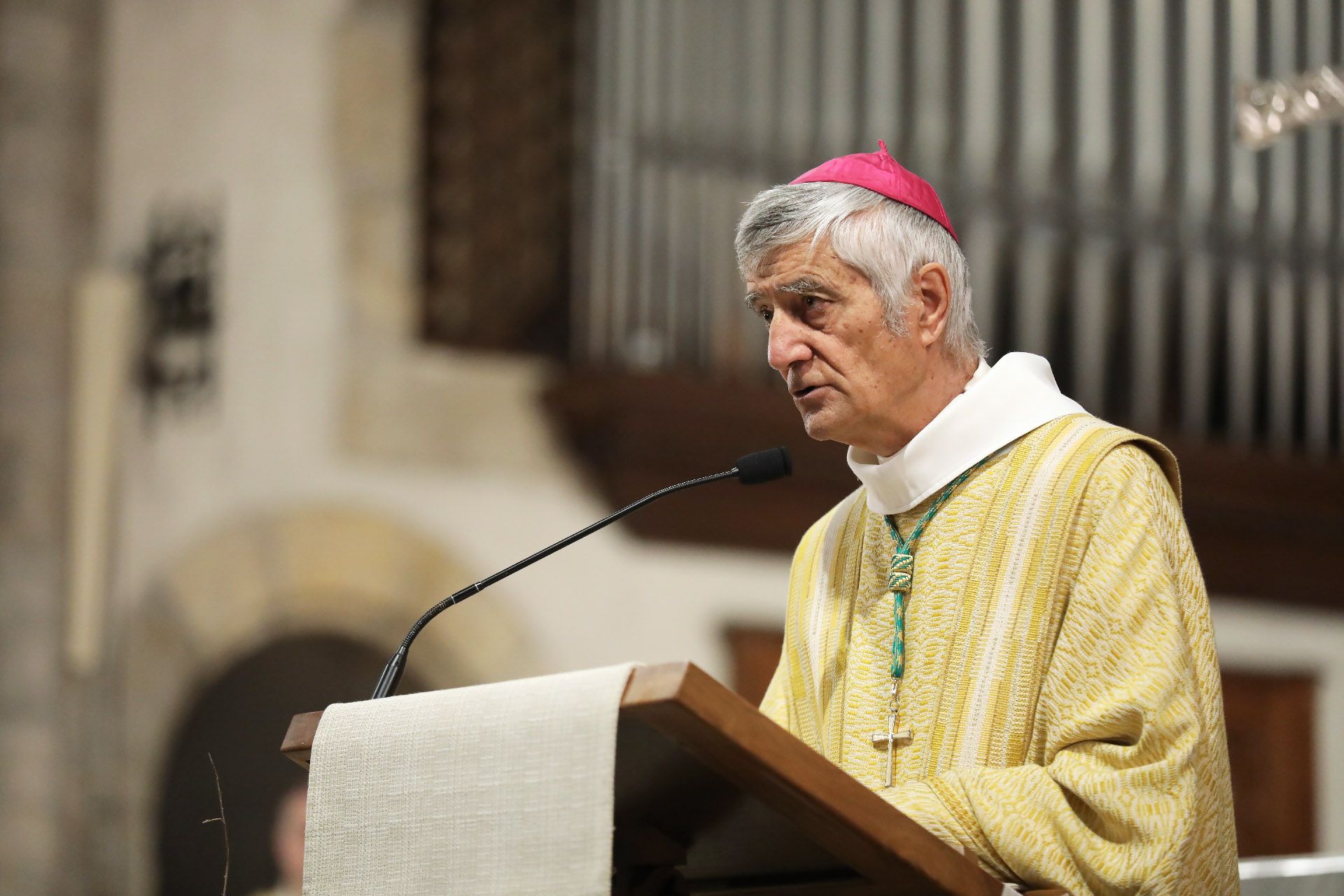
“The anointing of the Holy Chrême manifests the descent of the Spirit called to invest the whole person who has just been marked so that she has everywhere ‘the good smell of Christ’”. Whoever was anointed, baptized, confirmed, the priest, the bishop, is now configured to Christ, to Mgr Lovey. “Today in favor of this celebration, we are offered to let the Holy Spirit come to heal our wounds, heal them and heal us,” concluded the bishop. (cath.ch/bh)
Mass chrism
Each year, in all the dioceses of the world, priests, deacons and faithful come together to celebrate the chrisal mass. It takes place normally on the morning of Holy Thursday but can be anticipated. Mass chrism receives this name because it is during this celebration that the Holy Chrême is consecrated. This oil will serve from the baptisms of Easter and then throughout the year for the sacraments of baptism, confirmation and order.
With the holy chrême which is the subject of a special consecration, two other oils are blessed: the oil of the catechumens which serves in preparatory celebrations for baptism especially for adults or already large children and the oil used for the sacrament of the sick. BH
What canon law says
Canon law recommends olive oil. At 16e Century, the Paul IV and Pi V -vs V Popes also authorized the use of “Peru Balm”. By encyclical Across the oceanfrom April 18, 1898, Léon XIII allowed, under certain conditions, the use of the indigotier. According to the Code of Canon Law, CAN. 847 §1 and ritual for the anointing of patients, promulgated by Paul VI, November 30, 1972, the legislation of the Latin Church makes it possible to use, in addition to olive oil, other natural vegetable oils for the making of holy oils.
Originally, the holy chrême was a mixture of oil and Judea balm. In the Byzantine rite, more particularly in Armenians, Chrism, called Myron, is also composed of olive oil and balm, but other odoriferous substances are added. The Maronites always add to olive oil and balm, saffron, cinnamon, pink essence, white incense, etc. BH
© Catholic Catholic Catholic Cath-Info, 17.04.2025
The rights of all the contents of this site are deposited in Cath-Info. Any diffusion of text, sound or image on any medium whatsoever paying. Recording in other databases is prohibited.

